
|
You entered: scientist
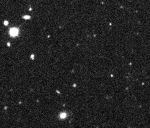 2012 VP113: A New Furthest Known Object in Solar System
2012 VP113: A New Furthest Known Object in Solar System
31.03.2014
What is the furthest known object in our Solar System? The new answer is 2012 VP113, an object currently over twice the distance of Pluto from the Sun. Pictured above is a series...
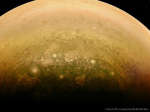 Clouds Near Jupiters South Pole from Juno
Clouds Near Jupiters South Pole from Juno
25.10.2016
What's happening near the south pole of Jupiter? Recent images sent back by NASA's robotic Juno spacecraft are showing an interesting conglomeration of swirling clouds and what appear to be white ovals.
 Gullies on Mars
Gullies on Mars
24.10.2002
The Gullies of Mars would probably not have been sensational enough for the title of a vintage Edgar Rice Burroughs story about the Red Planet. But it would get the attention of planetary scientists today.
 Hints of Higgs from the Large Hadron Collider
Hints of Higgs from the Large Hadron Collider
18.12.2011
Why do objects have mass? To help find out, Europe's CERN has built the Large Hadron Collider (LHC), the most powerful particle accelerator yet created by humans. Since 2008, the LHC smashed protons into each other with unprecedented impact speeds.
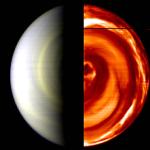 Swirling Clouds Over the South Pole of Venus
Swirling Clouds Over the South Pole of Venus
1.05.2007
What's happening over the South Pole of Venus? To find out, scientists sent the robot Venus Express spacecraft now orbiting Venus directly over the lower spin axis of Earth's overheated twin. Venus Express confirmed there a spectacular massive swirling storm system with similarities to the vortex recently imaged over Saturn's South Pole.
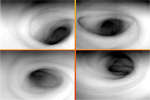 Venus South Polar Vortex
Venus South Polar Vortex
28.09.2010
What's happening over the South Pole of Venus? To find out, scientists have been studying images taken by the robotic Venus Express spacecraft when it passes over the lower spin axis of Earth's overheated twin.
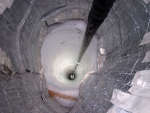 Ice Fishing for Cosmic Neutrinos
Ice Fishing for Cosmic Neutrinos
13.02.2011
Scientists are melting holes in the bottom of the world. In fact, almost 100 holes melted near the South Pole are now being used as astronomical observatories. Astronomers with the IceCube Neutrino Observatory lowered into each vertical lake a long string knotted with basketball-sized light detectors. The water in each hole soon refreezes.
 Help Search for Interstellar Dust
Help Search for Interstellar Dust
25.10.2006
What caused that hole? The hole in question appears as a small dark circle on the far right. If the above image of aerogel seems dull and uninteresting, then welcome to one aspect of real world science.
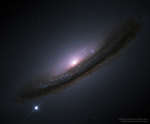 Rumors of a Dark Universe
Rumors of a Dark Universe
4.08.2019
Twenty-one years ago results were first presented indicating that most of the energy in our universe is not in stars or galaxies but is tied to space itself. In the language of cosmologists, a large cosmological constant -- dark energy -- was directly implied by new distant supernova observations.
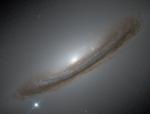 Rumors of a Strange Universe
Rumors of a Strange Universe
2.12.2001
Three years ago results were first presented indicating that most of the energy in our universe is not in stars or galaxies but is tied to space itself. In the language of cosmologists, a large cosmological constant is directly implied by new distant supernovae observations.
|
January February March April May June July |
|||||||||||||||||||||||||||||||||||||||||||||||||